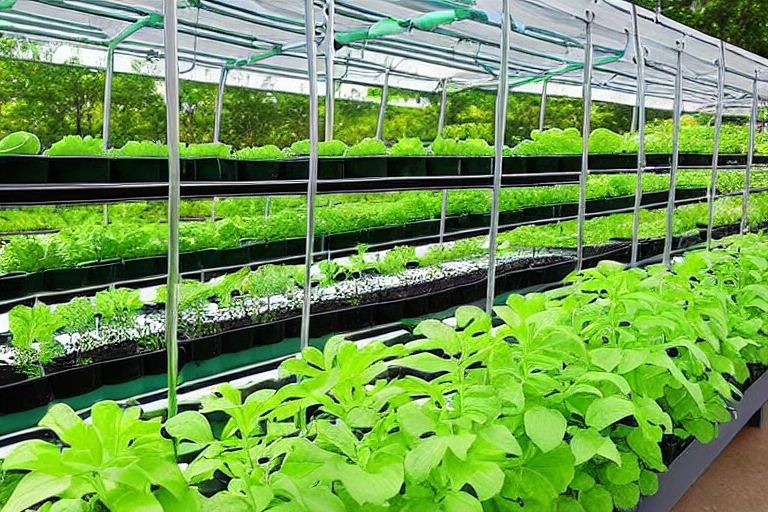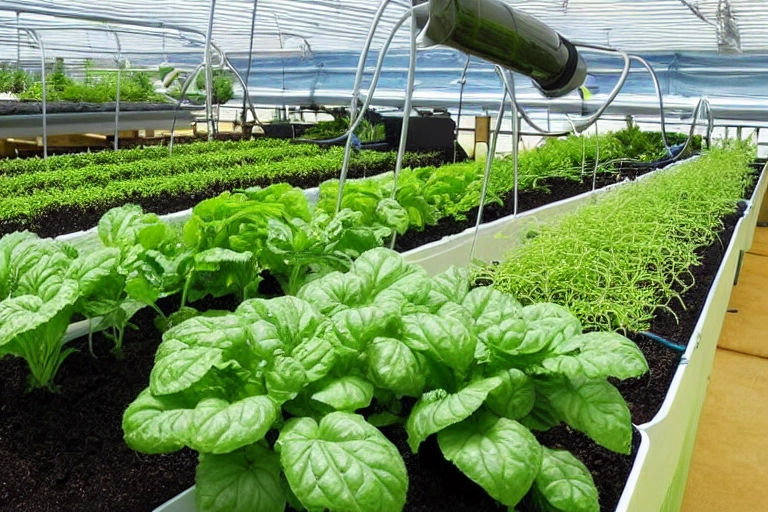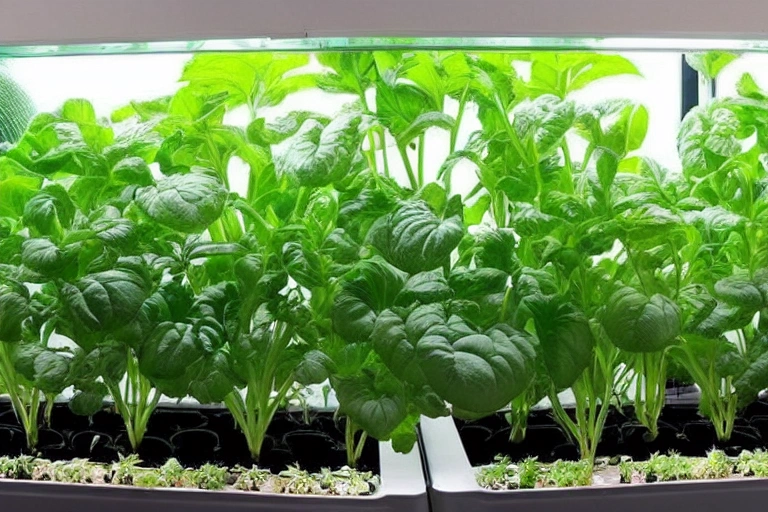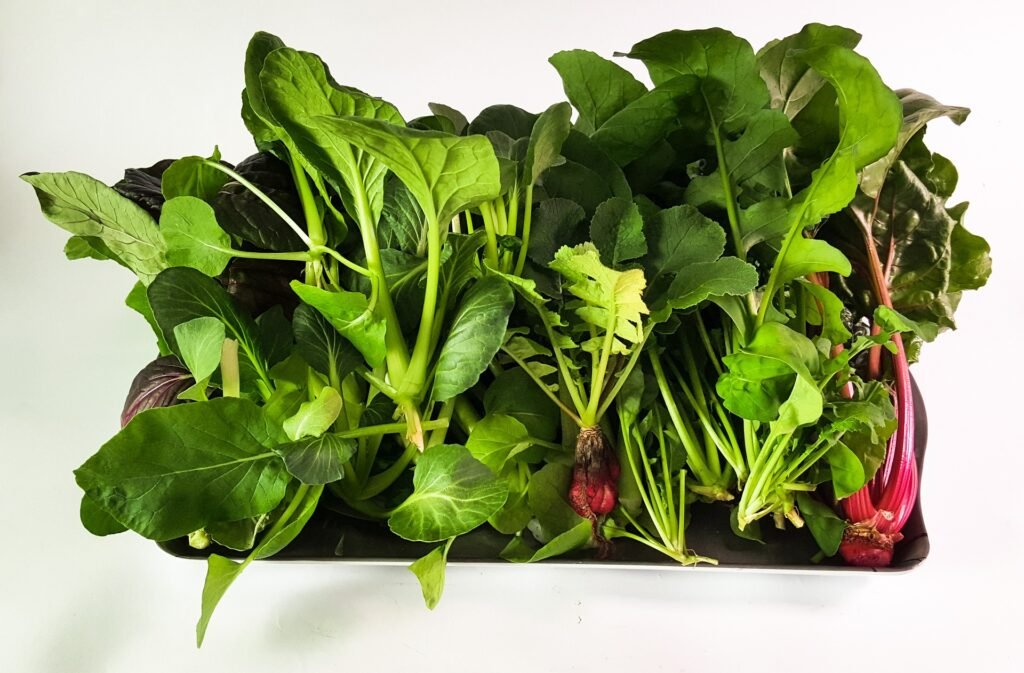As the world population continues to grow, so does the demand for food. In order to meet this demand, new and innovative methods of agriculture have emerged. One such method is hydroponics, which has gained popularity in recent years due to its potential for high yields and efficient use of resources. But is it really the future of farming? In this blog post, we will explore the advantages and disadvantages of hydroponics and how it compares to traditional soil-based agriculture. Get ready to dive into the world of hydroponics and discover if it’s worth all the hype!

What is Hydroponics and How Does it Work?
Hydroponics is a method of growing plants without soil, using a nutrient-rich water solution instead. The plants are grown in a controlled environment, often indoors, with the water solution delivered directly to the roots. This allows for precise control over the plant’s growing conditions, including temperature, humidity, and nutrient levels.
One of the advantages of hydroponics is that it can result in higher yields than traditional soil-based agriculture. This is because the plants have access to a consistent supply of nutrients and water, which can lead to faster growth and larger harvests. Additionally, hydroponic systems can be set up in smaller spaces and can be used year-round, making them ideal for urban or indoor gardening.
However, there are also disadvantages of hydroponics to consider. The initial setup costs can be high, and there is a learning curve involved in maintaining the system and ensuring proper nutrient levels. Additionally, power outages or equipment failures can quickly lead to crop loss if not addressed promptly.
Despite these potential drawbacks, hydroponics offers a sustainable and efficient method of agriculture that is worth considering for those looking to maximize their yields while minimizing their environmental impact.
The Advantages of Hydroponics: Why Choose This Method?
Advantages of Hydroponics:
Hydroponics offers several advantages over traditional soil-based agriculture. For starters, it allows for a higher yield in a smaller space as the plants can be packed closer together than they would be in soil. This makes hydroponic gardening ideal for urban areas where space is limited.
Additionally, hydroponic systems use less water than traditional farming methods and allow for precise control of nutrient levels, ensuring that plants receive exactly what they need to grow healthy and strong.
Furthermore, pests and diseases are easier to manage in hydroponic gardens since there is no soil for them to thrive in. This means fewer pesticides are needed which reduces chemical contamination concerns.
Overall, these benefits make hydroponics an attractive option both commercially and domestically particularly those living within city limits or those with limited outdoor spaces whilst still providing fresh produce throughout the year regardless of weather conditions.
The Disadvantages of Hydroponics: Potential Drawbacks to Consider
While hydroponics offers many advantages, it also has some potential drawbacks to consider. One of the main disadvantages is the initial cost of setting up a hydroponic system, which can be more expensive than traditional soil-based agriculture. Additionally, hydroponic systems require a constant supply of electricity and water, which can increase operational costs.
Another potential drawback is the risk of system failure. If there is a power outage or equipment malfunction, plants in a hydroponic system can quickly die without proper attention. Additionally, maintaining the correct nutrient balance in a hydroponic system can be challenging and requires careful monitoring.
Finally, some people argue that hydroponics lacks the natural microbial diversity found in soil-based agriculture, which could potentially impact plant health and flavor. However, this issue can be mitigated by using organic nutrients and supplements in a hydroponic system.
Overall, while there are some potential drawbacks to consider with hydroponics, many growers find that the benefits outweigh the costs.
Comparing Hydroponics to Traditional Soil-Based Agriculture
Hydroponics and traditional soil-based agriculture have their own unique advantages and disadvantages. While hydroponic systems offer faster growth rates, more control over plant nutrients, and require less space than traditional farming methods; they also require a significant investment in equipment and may be difficult to maintain for beginners.
On the other hand, traditional soil-based agriculture allows for more natural nutrient cycling, requires less electricity or energy consumption than hydroponics, but can also result in lower crop yields due to uncontrollable environmental factors such as weather conditions and pests.
However, comparing both methods based on yield efficiency shows that hydroponic systems consistently outperform conventional farming with up to 8 times higher yield production per unit area. Studies also show that hydroponically grown plants have a more robust root system which grants the plant access to ample oxygen thus making them grow much faster compared with those grown in the field.
In addition to increased yields, indoor hydroponic systems are not affected by weather patterns like outdoor crops would face. Also as it eliminates use of soil coming from open fields , the risk of pesticides leaching into groundwater is significantly reduced making it an eco-friendlier solution for food production.

Environmental Benefits of Hydroponics: A Sustainable Solution?
Hydroponics has gained popularity as a sustainable solution in agriculture due to its environmental benefits. One of the key advantages of hydroponic systems is that they use significantly less water than traditional soil-based agriculture, making them an ideal choice for regions experiencing drought or water scarcity. Additionally, hydroponic gardens can be set up indoors with artificial lighting, reducing the need for land and minimizing transportation costs.
Another key benefit of hydroponics is that it allows farmers to grow crops year-round regardless of weather conditions, ensuring a steady supply of fresh produce even during off-seasons. Moreover, since plants grown in hydroponic systems are not exposed to pests or diseases found in soil-based ecosystems, there is less need for pesticides and herbicides which further contributes to sustainability.
Overall, with greater attention being paid towards eco-friendly farming practices globally, it’s no surprise why many agriculturalists have turned toward hydroponics as a way to meet this demand while also improving yields.

Economic Considerations: Is Hydroponics Cost-Effective?
One of the biggest misconceptions about hydroponic gardening is that it’s always more expensive than traditional soil-based agriculture. While there are certainly some upfront costs associated with setting up a hydroponic system, many growers have found that they can actually save money over time by using less water and fertilizer, optimizing their yields in smaller spaces, reducing pest problems, and minimizing waste.
Careful planning is essential to making sure that your hydroponic garden remains cost-effective in the long run. Start by considering your goals for crop yield and nutrient density, as well as any environmental or economic factors that may impact your growing conditions. From there, you can select the appropriate equipment and nutrients for your setup based on carefully calculated measurements.
In addition to careful planning, proper maintenance is key when it comes to maximizing yield while minimizing expenses. Regular monitoring of pH levels and nutrient concentrations helps avoid imbalances or deficiencies that could harm plants’ growth potential. Additionally, keeping an eye out for pests or disease symptoms allows growers to quickly address issues before they become major setbacks.
By combining strategic planning with consistent maintenance practices, growers can make hydroponics a viable option for sustainable agriculture with significant cost savings advantages over time.

Getting Started with Hydroponic Gardening: Tips and Tricks
Getting Started with Hydroponic Gardening: Tips and Tricks
Starting a hydroponic garden can seem overwhelming, but it doesn’t have to be. Proper planning is crucial for success. First, choose the right system for your needs – there are several types of hydroponic systems available, each with its own advantages and disadvantages.
Next, select appropriate crops that thrive in a hydroponic environment such as lettuce or tomatoes. Be sure to monitor nutrient levels closely and adjust them as needed to ensure optimal growth.
Lighting also plays a critical role in plant growth, so invest in high-quality LED grow lights designed for indoor gardening.
Maintain proper pH levels by checking regularly using test kits or meters. Keep the water temperature between 65-75°F and provide good airflow to prevent mold growth.
Don’t forget about sanitation – keep all equipment clean to avoid the spread of disease among plants.
With proper preparation and attention to detail, you can enjoy abundant harvests from your very own hydroponic garden!

What Are the Advantages of Using Hydroponics for Growing Romaine Lettuce?
Hydroponics offers numerous advantages to grow lettuce at home. This innovative method allows plants to grow without soil, conserving space, water, and resources. With hydroponics, lettuce can be grown year-round, ensuring a constant supply of fresh produce. Additionally, this technique eliminates the risks associated with soil-borne diseases and pests, resulting in healthier and more robust romaine lettuce crops.
Do the Advantages of Hydroponics Outweigh the Disadvantages?
When considering understanding hydroponics gardening, it is crucial to weigh the advantages and disadvantages. Hydroponics offers benefits like efficient water usage, controlled environments, and higher crop yields. However, it also requires a significant investment, technical expertise, and careful monitoring. Ultimately, the potential advantages, such as year-round cultivation and minimal pesticide use, may outweigh the disadvantages for those committed to this innovative gardening method.
Common Mistakes to Avoid When Starting a Hydroponic Garden
Choosing the Wrong System: Factors to Consider
When starting a hydroponic garden, it’s important to choose the right system for your needs. One common mistake is choosing a system that doesn’t match your goals or skill level. Consider factors such as the size of your space, the type of plants you want to grow, and how much time and effort you’re willing to invest. Another mistake is not doing enough research on the different types of hydroponic systems available. Make sure to read reviews and talk to experienced growers before making a decision. By avoiding these mistakes, you can ensure that your hydroponic garden is successful and yields high-quality produce.
Neglecting pH and Nutrient Levels: Importance of Monitoring
Maintaining proper pH and nutrient levels is crucial in hydroponic gardening. Neglecting to monitor these levels can lead to stunted growth, poor yields, and even plant death. It’s important to regularly test the pH of your nutrient solution and adjust it as needed to ensure that your plants are able to absorb the necessary nutrients. Additionally, over or underfeeding your plants can cause nutrient deficiencies or toxicities, so it’s important to follow a feeding schedule and monitor your plants for any signs of stress. By monitoring pH and nutrient levels closely, you can avoid common mistakes and maximize the yield of your hydroponic garden.
Overcrowding Plants: Proper Spacing Techniques
Overcrowding plants in a hydroponic system can lead to stunted growth, diseases, and reduced yield. It’s crucial to give each plant enough space for its roots to grow and access water and nutrients properly. Proper spacing techniques include using larger containers or trays, limiting the number of plants per unit area, and following guidelines specific to the type of plant being grown. Proper Spacing Techniques will also allow adequate airflow between plants which helps prevent fungal diseases from developing due to increased humidity levels. Adequate spacing is essential for optimal growth and shouldn’t be overlooked when setting up a hydroponic garden.
Ignoring Pest Control: Preventative Measures for a Healthy Garden
When it comes to hydroponic gardening, one of the most common mistakes is ignoring pest control. Without proper preventative measures in place, pests can quickly take over and devastate your plants. It’s crucial to regularly inspect your garden for any signs of infestation and act quickly if you spot anything suspicious. Introducing beneficial insects such as ladybugs can also help keep pests under control without using harmful chemicals that could harm both the environment and your plants. Don’t let pesky bugs ruin all your hard work – prioritize pest control to ensure a healthy, thriving hydroponic garden.

Is Hydroponic Gardening Right for You? Factors to Consider Before You Begin
Before diving headfirst into hydroponic gardening, there are a few factors to consider. Firstly, personal commitment and time management skills are important as maintaining a successful hydroponic garden requires consistent attention to detail. Additionally, the initial investment in equipment and supplies can be steep compared to traditional soil-based agriculture methods.
Other key considerations include your location – is it suitable for indoor or outdoor hydroponics? Also, think about the crops you want to grow- some plants thrive better in hydroponic environments than others. If you’re someone who enjoys experimenting with new techniques and tinkering with technology, then hydroponic gardening may be right up your alley. Ultimately though, it’s important to weigh the pros and cons of different growing approaches before committing yourself fully.
In conclusion, hydroponic gardening offers a unique and innovative way to grow plants in an efficient and sustainable manner. While there are certainly advantages to this method – such as increased yield, reduced water usage, and greater control over growing conditions – there are also some potential disadvantages to consider. Ultimately, the decision to pursue hydroponics will depend on a variety of factors including economic considerations, environmental concerns, and personal preferences. By weighing the pros and cons carefully before getting started with hydroponic gardening, you can maximize your chances of success while minimizing any potential pitfalls along the way.

